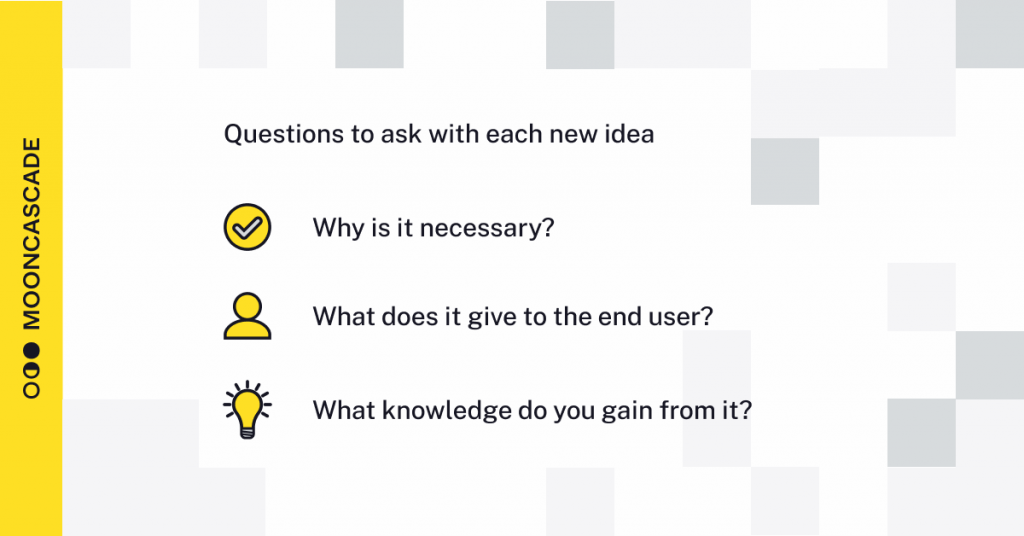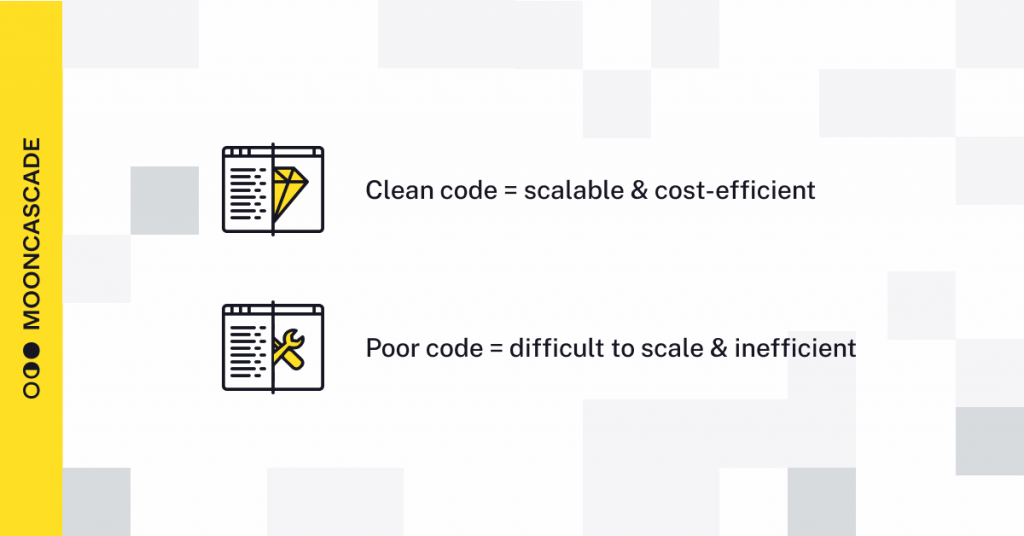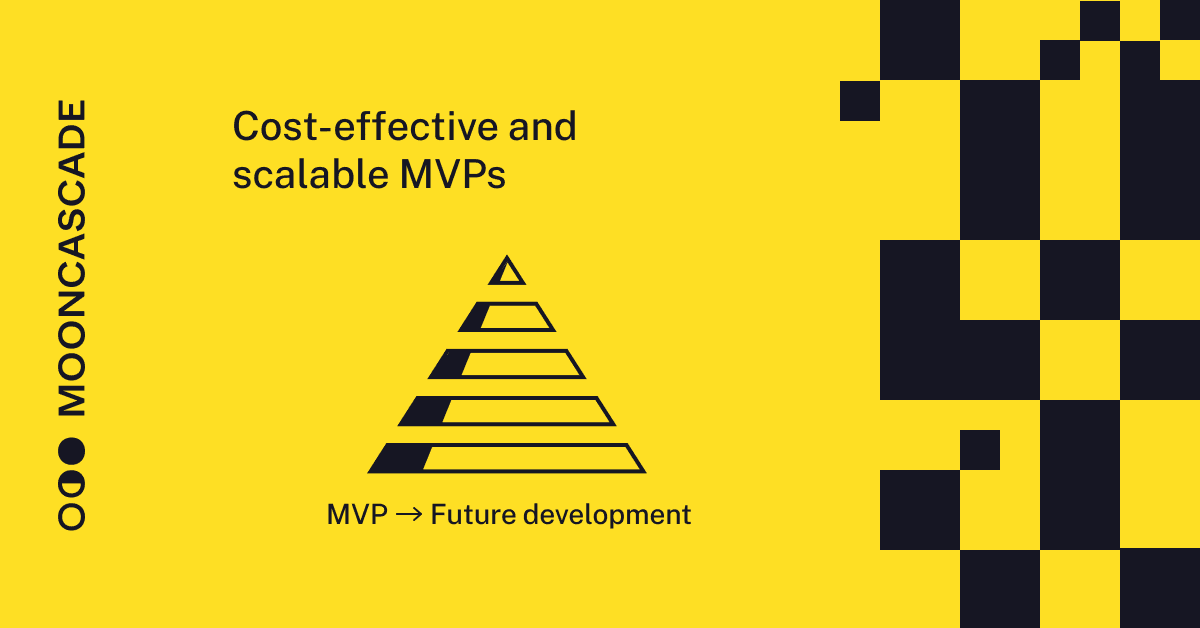MVPs FTW: How to Create a Cost-Effective MVP That’s Scalable Too
While prototypes have become an essential part of our pop-culture vernacular over the last decade (thanks again, Marvel movies!), MVPs still mean different things to different people.
Outside of the tech community, star athletes like LeBron James or Michael Jordan are regularly called MVPs, or the “most valuable players” of their teams – while in the tech world, MVPs have a much more technical, but no less important, interpretation: Minimum Viable Products, a product development milestone that is crucial to any product design process.
As you will see in this article, creating a cost-effective and scalable MVP solution goes far beyond creating a “lite” version of your dream product and releasing it to the masses: it also has a strong analysis component, coupled with a need to keep previously determined decisions in mind.
Code is changeable, and so is design; but when it comes to cutting costs and building to scale, driving your product development with a firm hand on the wheel is essential. It’s not that running with a world-changing idea for a product is wrong (we know the feeling!): but looking before you leap will let you leap just that much bigger. Which could well be what makes or breaks your beloved product!
Find out all you need to know about MVPs in this article, including:
- The product development-led definition of an MVP
- The difference between MVPs and prototypes
- The importance of analysis while developing your MVP
- Why you should guide your MVP through the feedback process with a firm hand
- How to build your MVP to scale in practice
- The optimal product development flow for your MVP’s feature´requests
On your marks, get set – let’s go!
How do we define an MVP?
The most obvious answer is a bit of a mouthful: MVPs, or minimum viable products are product iterations that contain the least possible amount of functionalities to still attract user bases big enough to test and validate the product itself.
So far, so good. The business rationale behind MVPs is to gain a thoroughly based understanding of whether the idea behind the product works – before investing more time and energy into further iterations or time-consuming details.
However, looking at it from a purely product perspective, things become slightly more complex. Since no two products are exactly the same, it follows that each and every MVP needs its own set of criteria and features. In other words, there’s no standardized definition or template we can all use as a blueprint (don’t worry, we’ll get back to this later!).
Prototypes and MVPs – more of the same?
Prototypes and MVPs often get mixed up – even by people within product development! In reality, they’re used at two completely different stages of the product development flow: prototypes typically earlier than MVPs (and released only internally), MVPs later on (and made publicly available to all intended users) to determine whether your product will actually sell in the real world.
We’ve broken down the key differences in this table below.
| Prototype | MVP | |
| Purpose | Designed with the intention of testing ideas and assumptions, gathering feedback from users, and exploring different solutions to problems. | Designed with the intention of being released to the public and measuring real-time demand and product-market fit (i.e. are people engaging and converting). |
| Development | Not yet developed. | Developed with just enough features to be usable by early adopters. |
| Complexity and functionality | Ranges from simple sketches and paper-based wireframes to interactive “clickable” versions (e.g. in Figma). | A basic first version of a fully functional, hardcoded product (a mobile app, a website, etc.) with a few key features. |
| Engineering | No engineers included. | Engineers included. |
| Validation and launch | Tested with users, but not released to market (private). | Tested with users before release, released to market, and iterated based on ongoing release findings (public). |
The first step of your MVP journey
Remember what we said about there being no standardized blueprints for MVPs, and having to come up with your own criteria? While this may sound time-consuming at first, it’s actually a blessing in disguise (especially in today’s economy)!
Nailing down exactly what your MVP needs to deliver for your business may take more hours than just ticking boxes off a checklist, but it’s also a sure-fire way to cut costs: after all, what better way to stretch your budget than to trim all the fat from your product from day one?
Of course, to do this, there’s one key step your MVP journey has to start with, and that’s – wait for it! – a thorough analysis of the MVP itself.
“Wait, that’s it?”, you might be thinking to yourself. We understand: in an ideal world, analysis would be non-negotiable for each and every product development process. However, for many fledgling startups with investors and stakeholders breathing down their necks, there’s significant pressure to kickstart their product development early – and to speed up each coming release, development teams have been known to ignore or skip analysis altogether.
…Which can cause a veritable host of problems in the foreseeable future, from missing user flows or related features to focusing on irrelevant functionalities that don’t even validate the main idea behind the product!
Whereas asking the right questions before you set off on your MVP journey – like “Why is THIS feature necessary?”, “How does it serve the end user?” or more importantly, “What knowledge will we gain from adding it into our MVP?” – helps keep you on the most cost-effective (and efficient) path, leading you all the way to the best possible iteration of your product.

Holding your MVP steady during feedback
Let’s face it: priorities change. It’s a fact of life (and product development!) that the principles and business needs driving your MVP will, at some point, morph into something slightly more convoluted. Which makes it all the more crucial to have a firm hand steering the entire process! (Also, just another reason why strong product owners/project managers are worth their weight in gold.)
Here’s an example we saw first-hand: when different parties started using and testing the same white label MVP, and came back with increasingly diverse opinions and requests, the product team (very kindly) agreed to implement all of them – which had quite the dramatic effect on the project’s deadline and development speed!
That’s not to say that the feedback itself was at fault; after all, that’s what MVPs are for. But since product teams usually work with tight deadlines, adding a multitude of changes to an already full backlog inevitably leads to overworked resources. And really bad code. (Which, in turn, leads to longer development time for new features, and more difficulties scaling the product itself… Quite a sad snowball effect.)
Keeping your MVP scalable
We build MVPs because we want to test and validate the ideas behind our product – we’ve established this. Going one step further, the whole point of adding core functionalities to the product before releasing it into the wild is for it to become a foundation for future development and growth. In other words, it needs to be scalable. What this means for you and your product team, on a practical level, is this:
PLAN YOUR HOSTING METHODS PROPERLY
Since the main quality of a scalable product is that it doesn’t need to be redesigned if/when its workload increases steeply (like with a sudden jump in the user base), it’s essential to plan your product’s hosting methods correctly from the get-go. Luckily, there are several solutions today that help do this, like Google Cloud or Amazon AWS. (This is also important when it comes to cutting costs: a fragile hosting setup can really strain our short-term finances!)
AUTOMATION SAVES TIME AND MONEY
One of the most expensive things in software development is the cost of high-quality resources – a.k.a. the people coding your product! Using automated processes, on the other hand, will not only offload your budget, but it will make your product less prone to (human) error, especially if you use already existing tools from e.g. Google to host your application. Only minor configurations required, and the whole setup takes no more than a few hours: deploying new versions of your MVP will become a piece of cake!
USE EXISTING TOOLS FOR YOUR UI
Instead of reinventing the wheel, MVPs should focus on core features throughout the product development process – meaning product design as well as coding. Today, there are several different UI libraries that can save huge amounts of time when it comes to developing and designing input fields, buttons or margins, like radixUI or Tailwind for web applications. (Always keep your future plans and requirements in mind, though, when choosing libraries: each has its own special flavor, like the amount of customisation they allow etc.)
DESIGN SYSTEMS SIMPLIFY YOUR GROWTH
We can’t talk about design without talking about… well, design! Scalable product design isn’t as complex as it sounds, it just needs a well-thought-out design system as a rock-solid foundation. Design systems make adding new functions and features that correspond to your overall product design principles significantly easier, especially from a reusability perspective – which, incidentally, ties into our final scalability point:
KEEP YOUR CODEBASE CLEAN
MVPs should be the kick-off point for future development, not iterations that you’ll throw into the trash once it becomes outdated. Because of this, leveraging an up-to-date tech stack is essential: find stable yet growing libraries with good support and communities behind them, use modular structures and existing solutions for recurring tasks, and follow clean code patterns to become more cost-effective as well as scalable! As Ron Jeffries says in his article about refactoring: with every new feature, clean the code needed by that feature. You’ll thank yourself later.

Find the right flow for your MVP
Now that we know the importance of initial analysis as well as the practical implications of building our MVP to scale, all we need is a well-established product development flow to tie it all together. Since product development is a delicate process, with many different stakeholders and dependencies, sticking to a consistent, logical (and sequential!) flow is the single best way to smooth the transition from ideas/requests to released product features.
In our experience, a flow like this can work wonders:
- A new feature request arrives on the analyst’s table. The analyst makes sure that nothing is missing, all is taken into account and everything makes sense.
- The feature request goes to the designer (who uses the analyst’s insights from the previous step).
- Development receives the feature request. The assigned developer uses the design and insights from analysts for their work.
- Time for QA! The QA specialist verifies the feature’s implementation (based on design and insights from analysts).
- The feature is released, together with an accurate changelog.
And voilá! You’re done – with that special new feature, that is.
Of course, when it comes to MVPs, having even just core features can add up pretty fast, but sticking to a tried and tested development flow will lighten your load significantly.
If you still feel like you’d appreciate some support – well, that’s what we’re here for! We’ve developed dozens of MVPs for our clients here at Mooncascade, and our experienced designers and developers are happy to share our own product development know-how with your project team. Get in touch with us today to turn your dream product into a business reality as soon as possible.
*Article written by our developers Harri Olak and Serhii Kozik

